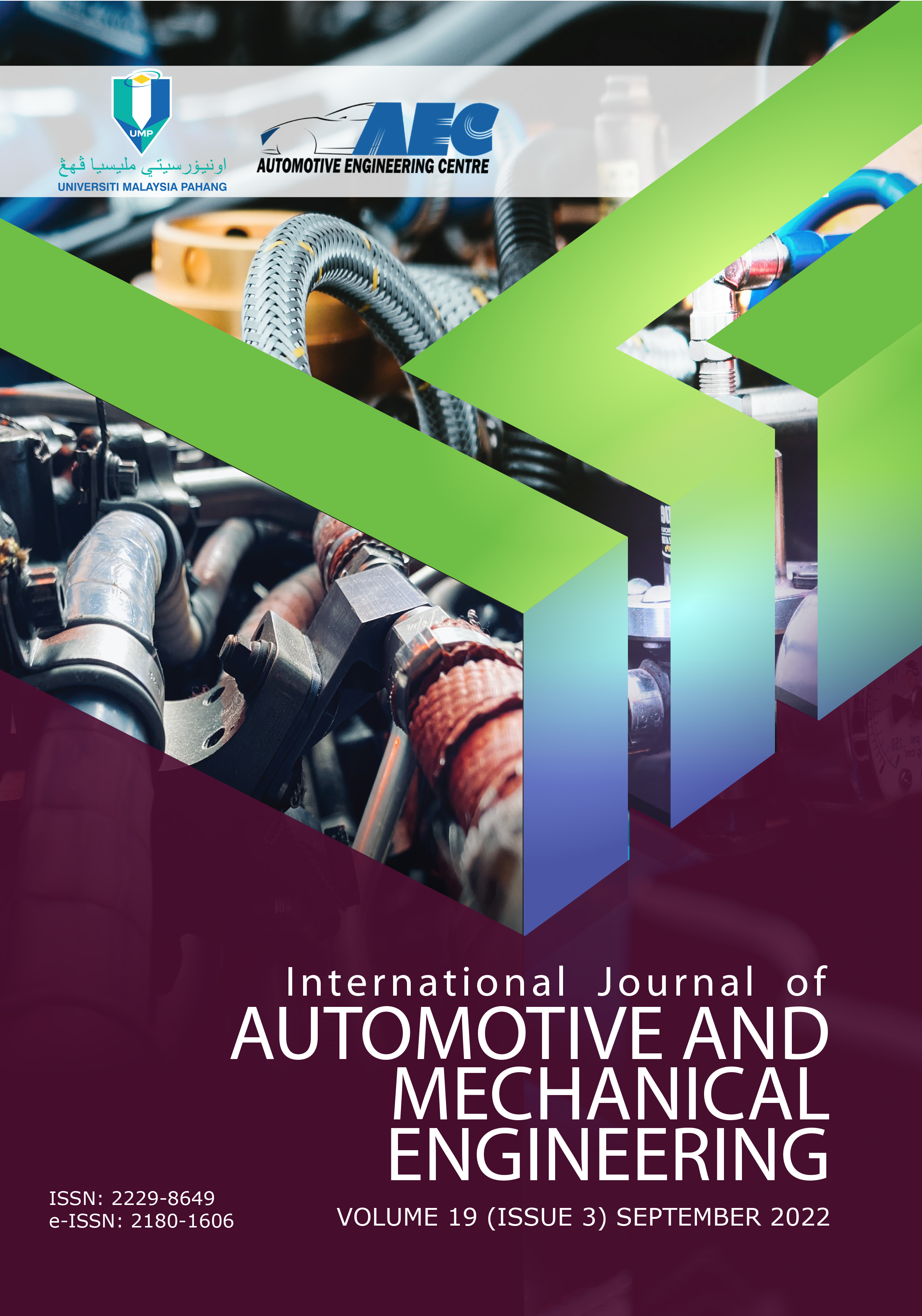Passive Drag Reduction of the Square Back Truck Body
DOI:
https://doi.org/10.15282/ijame.19.3.2022.02.0762Keywords:
Add on passive devices, CFD, Passive drag reduction, Square back road vehiclesAbstract
Drag is one of the most significant factors that increase fuel consumption, followed by operating cost of the vehicle. Square-back road vehicles like trucks and buses are common and popular means of transport across the globe. In this background, it is of great research value to reduce the drag on vehicles, improve their fuel efficiency and reduce their operational cost. In this work, a simplified model of a truck was considered, and its drag was reduced by modifying its geometry using passive drag reduction devices. The passive devices used in this study were backward-facing step, fins, splitter plates/tabs, dimple, vents, and channels. These devices, of different sizes and configurations, were numerically studied using CFD software Star CCM+ at a Reynolds number of 2.4127×10^6. Drag reduction up to 9.9% was achieved, when backward-facing step was placed at the bottom rear edge of the truck. Further, multiple circular channels used on the truck’s sides reduced the drag up to 6.5%, while multiple rectangular channels on the sides of the truck achieved 5.1% drag reduction. The maximum drag reduction of the fins was found to be 4.6%. In spite of these, no significant drag reduction was observed when using splitter plates/tabs, dimple and vents.
Downloads
Published
Issue
Section
License
Copyright (c) 2022 Universiti Malaysia Pahang Publishing

This work is licensed under a Creative Commons Attribution 4.0 International License.







